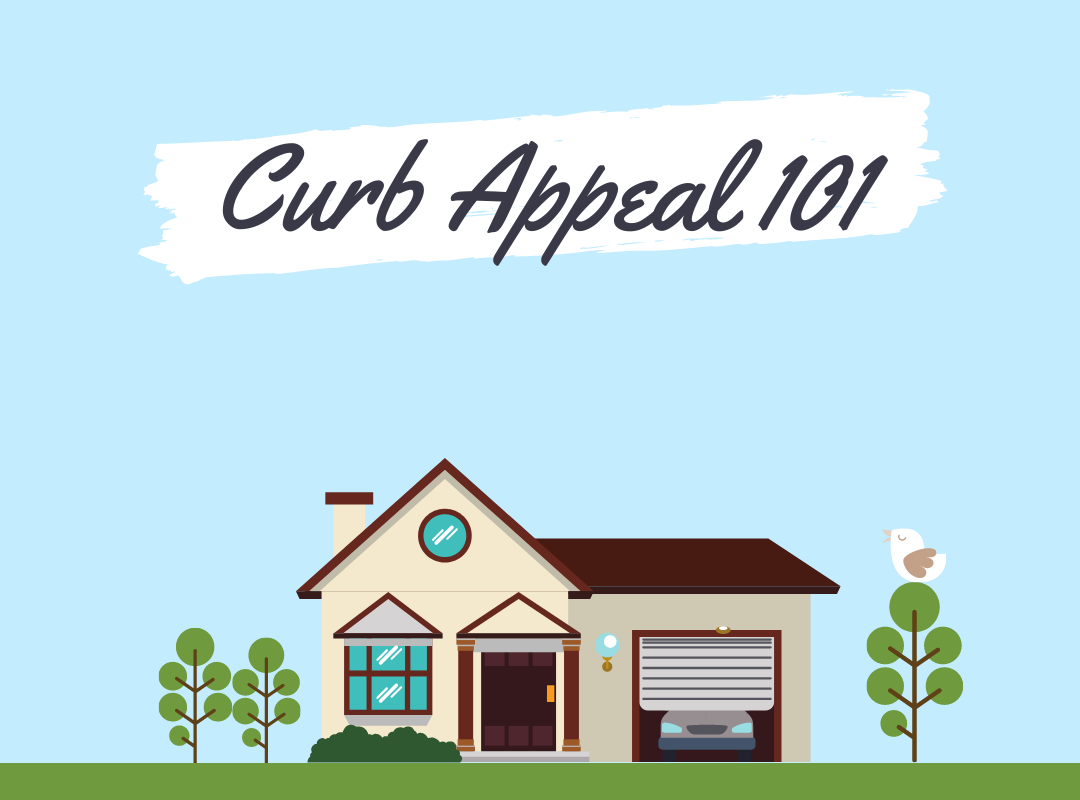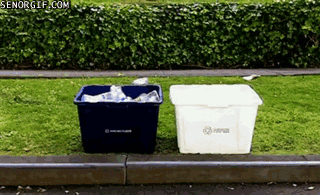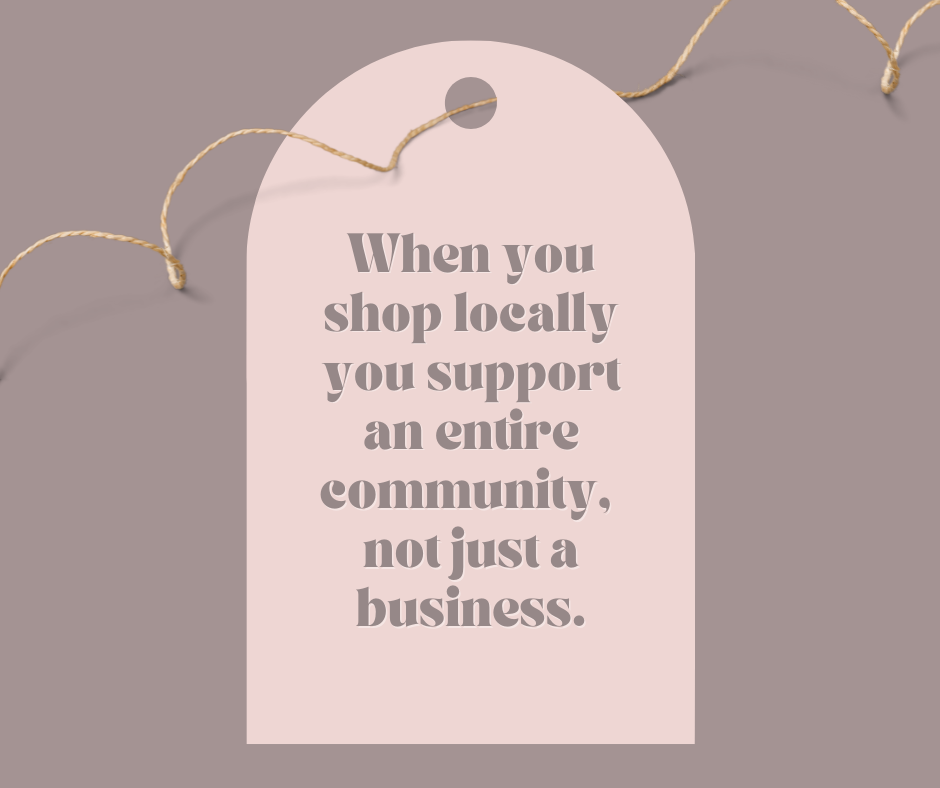
You've seen lists of easy upgrades in magazines and good ol' HGTV. But there are some accessible tips and tricks specific to the Seattle market that you should know, whether you're getting ready to sell your home or just want to spruce it up without breaking the bank!
My top 10 curb appeal tricks:
- Add modern house numbers! Replace dated, worn, or non-existent house numbers with simple, modern silver or black metal ones.
- Replace shiny or worn-out hardware on kitchen & bathroom drawers/cabinets, door handles, and lights.
- Fix past bad paint jobs—and put an actual coat on that white primer-only baseboard. When in doubt, paint it all Benjamin Moore "Simply White," with walls eggshell or satin finish, ceilings matte, and trim glossy.
- Swap out dated counters for simple white quartz or butcher block. For smaller jobs, you can find slabs at Second Use or look for seconds/extra pieces at a home improvement store. Just be aware of cutting, edging, and fit needs; you can procure the pieces, but installation is best left to a pro. Still have those old laminate counters and don't want to break the bank? Put down (carefully) some fresh marble- or tile-look adhesive sheets!
- Change all your light bulbs to a bright, warm, consistent tone throughout the house.
- Pressure wash driveway, sidewalks/concrete steps, fences, and siding (GENTLY) to remove moss and stains. This is a time-consuming but easy DIY one with a rental pressure washer!
- Landscaping clean up - Trim bushes, clear out weeds, mow & edge lawn (don't skimp on the edging), put down mulch or stones, and add pots or ground plants that you'll be able to care for easily. You can do this yourself over a weekend or two, or call in a pro.
- Paint the front door - The trends of a dark gray, navy, white, or black house with a color-pop door are still going strong. Dark gray/black/navy look great with a door in teal, coral, red, or white. A white house looks awesome with a natural wood or black door.
- Clean your screens and wash your windows; especially if you've lived in your home for a while, they're likely to have build-up from weather, road dust, and pollen. Scrub and hose off the screens (ideally in summer) and leave them off for sale; wash windows inside and out with a vinegar/water solution and a microfiber cloth.
- Grout & caulk around bathtub/shower/sinks and have moldy areas steam cleaned (or borrow my steam cleaner!). This makes a huge difference in how clean the bathroom reads.
You only have one chance to make a first impression on a buyer, so it's worth the extra time and attention to get your home in tip-top shape. When you are ready to sell, we'll review the list of additional spruce-ups that are right for your place, and I'll help you get all the right people out to get it done. Onward!
 RID & RECYCLE
RID & RECYCLE
Where to ditch the unwanted stuff
Every spring when we emerge from our winter hibernation, it seems there's more personal junk to offload than ever before. While some of the usual suspects—hello, Dearborn or Ballard Goodwills—often have long lines these days, you can take advantage of lesser-known resources to clear the way. And for heaven's sakes, try not to get in line at Goodwill on a Saturday!
Reuse Resources
- Habitat for Humanity Restore - New and gently used building materials, appliances, furnishings and hardware.
- Second Use - Higher-value items like old cabinets, tables/chairs, unused building materials, etc.
- TexGreen - Textiles (single socks, torn pillowcases, old clothes, etc.).
- Goodwill via College Hunks.
- Seattle Public Utilities - Remember that you can arrange for a pickup of foam, small gas canisters, batteries, small appliances/electronics, and even mattresses.
- Give and get stuff for free, with Freecycle and your local Buy Nothing group
Extra Food
Seattleites know it's actually illegal to toss food scraps in the garbage! Besides staying on the right side of the law, separating your food scraps is good for the planet (in landfills, scraps can release lots of methane) and you can keep the nutrients benefiting your own soil and garden if you have your own composting bin; here are some tips for getting it right.
And get those non-perishables where they can do some good fighting food insecurity:
Disposal Resources
- Quick reference to the city's "Where Does it Go?" page
- Ridwell comes to you, and takes all sorts of odd and hard-to-recycle stuff
If you just have TOO MUCH to deal with, I've been very happy with services from Happy Hauler or 1-800-Got-Junk; they charge by truck volume and are very helpful when removing heavy items. Good luck!
MEANS TO MOVE
 Getting creative with your $
Getting creative with your $
The pandemic and low mortgage interest rates have spurred some folks to seek more space, while others have leveraged their free time & reduced travel to make some home improvements. I've talked to a lot of folks trying to figure out their next, smartest money move, and the tangle of information out there can be overwhelming!
Here are some options you might not know about:
- Bridge loans - options to leverage existing house equity into a down payment for a new home purchase
- Home equity lines of credit (HELOC) and home equity loans (and refinancing)
- Windermere Ready program (pdf) - Advance $$ to tackle maintenance/upgrade projects and prepare your home for a more successful sale.
- Community land trust purchases (permanent affordable housing)
- Essential repair support from Rebuilding Together (for underserved communities)
Curious about which upgrades are "worth it"? Here is a quick overview of renovation ROI -- plus a framework for measuring DIY vs. Pro approaches. I'm always happy to give my two cents on your remodel plans—or connect you with the resources YOU need to get moving. And I can also recommend a fantastic financial advisor if needed!
ROBUST CLEANING
Where to focus your energy

A good "power hour" will get you past the basic surface cleaning and random piles (I like to set mine to the Saturday Night Fever soundtrack, just like when I was a kid). But what else is worth your time? Here are a few critical priorities to consider:
Clean for your health:
- Air quality - how are your furnace/AC ducts, filters, and vents? Remember, the air you're breathing passes through there, so prioritize getting those professionally cleaned or Google how to replace and refresh. Also, now's a great time to order your air purifier BEFORE fire season.
- Appliance operation - Are grimy/full dryer ducts, fridge coils, or dishwasher drains making them less energy efficient or shortening their lives? Make sure you clean them annually, according to manufacturer instructions
- Dry home - Now is a great time to walk around your house and inspect downspouts (which you already have directing water AWAY from your foundation, or tied into the store water drain, right??), gutters, and drains. Bonus points for checking the attic/roof/chimney for leaks, mold/moss, etc.
Let's protect your health and your investment by keeping your home dry, your appliances fully functioning, and your air quality as high as possible! If you need recommendations for vendors or tools, you know where to find me.
LIGHT HELP
Don't @ me for jumping the holiday gun...
No, I'm not ready for Christmas music, Hanukkah latkes, or consumer mania—but I know it's right around the corner. Frankly, Grant & I are thinking of putting up LED lights outside that can stay up all year round and turn whatever color we like for the season!
Avoid the staple gun! Depending on your home style and roof type, there are a wide variety of clips that will make your job easier and look better. DIY resources emphasize the importance of solid pre-planning (and a buddy!) for top-notch results:
If you want to get started without risking your life as an amateur ladder-climber, don't hesitate to call in some professionals:
LOCAL LOVE
Money ↔ Values check
The many galvanizing moments of 2020 have consistently reminded us to shop local, prioritize BIPOC business owners, and think about our footprint with every purchase. So I'm recommitting to some of my favorite resources and wanted to share here:
- HiveBoxx - A fantastic [black-owned] local resource for renting rugged, sanitized, reusable crates that will make your move SO much easier. No more Trader Joe's box begging or collapses at the most inopportune time!
- The Works for DIY classes and kits fitting all kinds of interests
- Package-free groceries and zero-waste products at Scoop Marketplace and Public Goods & Services
- Velouria, a womxn-owned shop with a focus on local, sustainable goods and makers
- Footprint Wine Tap – sustainable keg wines on tap!
- Saigon Siblings restaurants for pure Vietnamese deliciousness
- Get your next caffeine fix at The Station on Beacon Hill
When it’s miserable outside or the headlines are bleak, it’s easy to forget that there are inspiring people doing amazing things in Seattle. And then there are folks who are just out to create some joy…
I was walking during Snowmageddon a few days ago and spotted The Skipper–a little slippery slush couldn’t steal the bounce from her step. Seeing her bound up Pine made me–and literally every person in her wake–pick up my head and smile.
Some more things I’m appreciating right now:
- Laura and The Intentionalist
- Noura and the African Women Business Alliance
- Neighbors volunteering at the Garfield Community Center to support families/individuals coming in from the snow/cold.
So thanks, Raven, and everyone else who keeps Seattle sweet on this Valentine’s Day.
OK, guys, I know you have the best of intentions to keep your home in tip-top condition. But life gets in the way. Well, there are few priorities for the longevity and value of your home–not to mention your/your family’s safety–that you just can’t ignore!
Here are the top 5 critical items that typically come up in Seattle-area inspections:
1. Drainage
Drainage, drainage, drainage. According to the City of Seattle, the average yearly rainfall draining off the roof of a 1,400 SF house is over 30,000 gallons. That’s an incredible amount of water! And, from what I’ve seen, 9 out of 10 houses in Seattle have their downspouts (which carry the water from the gutters) depositing directly next to or a few short feet from their foundation–often with the ground sloped TOWARDS the foundation. Over time, this leads to flooding, huge moisture/mold problems, and big problems for the integrity of the foundation. Digging the right kind of perimeter drain and tying the downspouts into it isn’t terribly expensive or complicated–but it IS worth doing right.
2. Roof
Take all that drainage schpiel and apply it to your house’s FIRST line of defense: The roof. Then imagine the moss buildup, pine needles, overflowing gutters, and blown-off shingles your average Seattle roof might experience in a winter. Then remember that this is the piece of your house literally keeping you dry. Doesn’t your roof deserve a little extra TLC (done right, might I add–no power-washing here)?
3. Electrical
Look, I know it’s fun to watch YouTube videos and DIY. But when it comes to your house’s electrical panels, outlets, etc., some of the scariest work Jeffrey and I have seen was done by someone’s “handy uncle.” For the love of god, have a professional clean up your electrical panel, remove dangerous crossed wires, install GFCI outlets in your bathrooms/kitchen, and fix any outstanding hazards. This one is a BIG deal for safety and worth the money.
4. Rodent-proofing
Remember all that rain we mentioned? Well, that’s the reason rats LOVE to find the warm, dry places inside our attics, crawl spaces, etc. And they love to burrow up into the insulation and make a huge, stinky, unhealthy mess. It’s not enough to place traps or replace the insulation, though–you need to bring in a pro or commit to eliminating EVERY potential point of entry (those suckers are wily), removing compromised insulation, setting traps & monitoring, spraying to sanitize, and THEN re-insulating. A lot of folks only complete one or two steps, but I can promise you that you’ll be sad when you’ve done all that work and the rodents return.
5. Caulking/water control
Yes, more water stuff. A small stream of water dribbling behind your sink, next to your tub, under your toilet…it really doesn’t take much water to, over a period of time, start to rot your walls, cabinets, and floors in spots you can’t see. The solution? Keep the under-sink, tub, toilet, etc. well-caulked with the RIGHT materials. Put a shower curtain on that window in your shower so the ledge doesn’t rot. Use the bathroom fan every time you shower (for longer than you think you need). Pay attention to where the water is going and don’t let a decade pass before you notice that your toilet is about to fall into the dining room.
Yes, I know you are a great caretaker for your home. And I know this is naggy stuff. But I promise that if you take a little time to tie up your maintenance loose ends, your future self will thank you when you go to remodel, sell, or try to stay dry 😛 Now, let’s talk about ventilation…
MAKE A MOTHER'S DAY
All Women Deserve to Feel Beautiful
This Mother's Day, contribute to the YWCA's "All Women Deserve to Feel Beautiful" Mother's Day Drive. Help the YWCA provide high-quality, full sized, ethnically diverse personal care products to women in emergency housing program.
The collection drive runs from April 26 - 28, 2023. Doantions can be dropped off at the Phillis Wheatley Office, 2820 E Cherry St. Seattle, WA 98122, from 9:30 AM - 5:00 PM.
Examples of items can be found on the YWCA's Amazon wish list here.
Personal Care Items include:
- Sulfate-free shampoo and shampoo bars
- Leave-in conditioners and moisturizers
- Detanglers
- Combing and curl shaping crèmes
- Hair masks
- Scalp and hair oil or butter – castor oil, coconut oil, almond oil, jojoba oil and essential oils
- Edge control gels
- All-natural body lotions (sulfate- and paraben-free)
For fair products, look for hydrating ingredients that seal hair, like humectants, glycerin, honey, and butters.
Hair Styling Items include:
- Braiding hair, pre stretched preferred
- All types of combs and brushes
- Hair ties and puff cuff clamps
- Satin-lined headwraps, headbands, turbans, and pillow cases.
Join me in supporting the YWCA this Mother's Day.
How to feel more connected with your neighborhood
You've moved into your new place—congrats! You're busy setting things up, learning the quirks of your home, finding a new routine. You declare to your partner or friends that you're eager to explore the new neighborhood. Then, 2 years later, you've found your grocery store, favorite coffee shop, and dog park...but you still don't feel connected. What to do?
5. Find a business you wouldn't normally patronize--and talk with the owner.
You may not think you have a reason to visit that bodega/quilt shop/biker bar/service station down the street. But it's part of the fabric of your new neighborhood, and there's probably an interesting story about how long it's been there and what the owner has seen. You know you'll learn something: Do people come from far away to visit? Are there celebrity patrons? Is there a secret "house specialty"? If nothing else, you'll feel in the know once you've discovered the secrets of your neighborhood haunts.
4. Consider volunteering with/donating to a charity within 0.5 miles of your home.
According to a 2014 UW Evan's School Study, there are more than 1,000 registered nonprofits in King County alone--which means there's probably one geographically close to you. If you love supporting a good cause, imagine how you'll feel when that cause is literally close to home. Examples I've seen: Food banks, animal shelters, senior companion services, nature clean-up crews, school improvement orgs, etc. It will be that much easier to make time or feel connected to something down the street, and you can share something meaningful with your neighbors. That is true hyper-local investment!
3. Create an excuse to meet your neighbors (i.e., a party).
If you and your family still haven't met most of your neighbors, it may be time to change that. Whether you wish you had folks nearby to keep an eye on your place while you're gone or are just craving a feeling of community, it's never too late to make a connection. Of course, you may not become best friends with all your neighbors, but I'm willing to bet you'll find at least a few great folks to wave to on your ride home. The medium? Try putting up fliers for a shared block party, knocking on doors to suggest a multi-neighbor "open house" day, host a party at yours, or put up a sign for a games day at the closest park.
2. Read your local neighborhood blog/newsletter.
This one is a no-brainer. Even if you don't have time to sit down and read a full newspaper every weekend, you probably have 5 minutes when you're scrolling through your phone to check the neighborhood pages. You'll learn surprising facts, find opportunities to support local businesses, hear about city development/neighborhood changes, and probably find cool new places to visit. A simple Google search for your neighborhood name and "blog" will get you there--or I can help!
1. Walk around with beginner's mind.
You've already spent plenty of time in your neighborhood, but have you really SEEN it? Imagine what a kid would see if they were walking around it for the first time. What kinds of trees do you see? Are there any cool murals? A memorial bench or historic building? Is there a tiny art gallery, coffee shop, micro park, or little free library you might have missed? Exploring on foot--and slowly--will deepen your connection to this larger place you call home, and if you make it a regular practice, you just might meet other people trying to connect with their community, too.
You'd make Mr. Rogers proud.
Curious about gems in your neighborhood? I always have ideas, or know someone who does! Email me at evaconner [at] windermere [dot] com.






